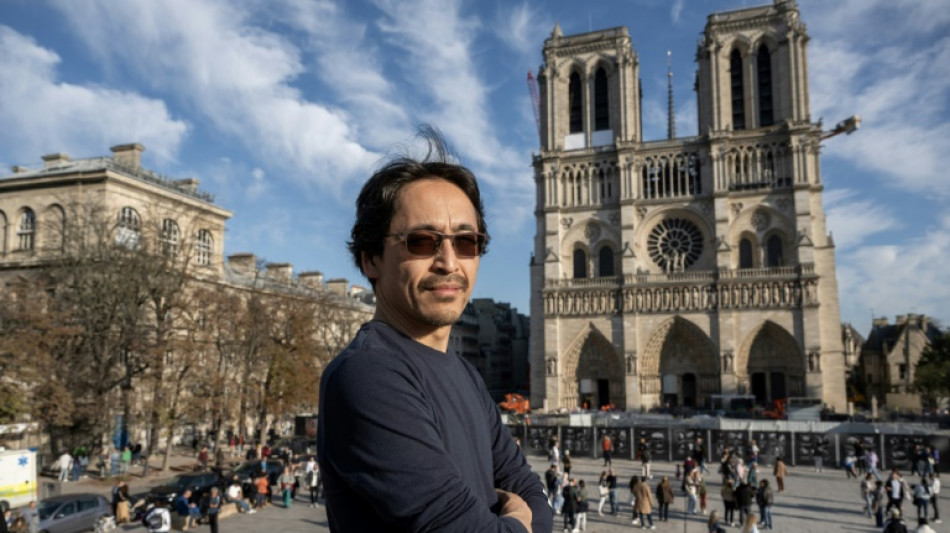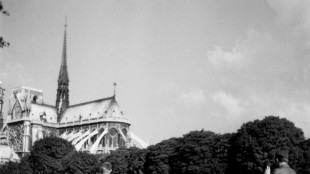

Japanese organ builder 'honoured' to restore voice of Notre Dame
Itaru Sekiguchi first heard the Great Organ of the Paris Notre Dame cathedral when he was 10. The "infernal sound" changed his life forever.
"It was a bit of a culture shock," he said.
Today the Japanese, 53, is one of a handful of specialists entrusted with tuning and voicing the fabled instrument as Notre Dame prepares to reopen on December 7 after a devastating fire in 2019.
The near 300-year-old colossus was miraclously spared by the flames.
Sekiguchi moved to France in his twenties to become an organ builder and restorer, dreaming of a chance to work on the "voice" of the masterpiece of Gothic architecture.
"I wanted to come to France because that's where it's happening. But when I told my family, they thought I was a bit out of my depth," Sekiguchi, who hails from Sendai in northeastern Japan, said in fluent French.
In 2018, he became the cathedral's official organ builder, responsible for the day-to-day maintenance of France's largest musical instrument, which is the height of a four-storey building.
The voice of the monument since 1733, the organ has 8,000 pipes and a sound when in full flight that its players describe as truly symphonic.
"It was my dream. It gave me a chance to get to know the instrument a little better," said Sekiguchi, who has lived in the central Correze department for a quarter of a century.
For three weeks a month, Sekiguchi handled maintenance operations, including tuning the organ, adapting to the constraints of one of the most visited places in France.
"Time is very limited," he said. "You have to work at night because otherwise it disturbs the tourists, but also because you need absolute silence for the tuning."
- 'I was afraid' -
But the dream was short-lived.
A year later, a fire ravaged the cathedral, and Sekiguchi lost his job.
He found solace in the fact that the organ was spared by the flames and was doused with relatively little water as firefighters fought to save the historic structure.
"I was afraid for the organ because during the night we didn't know what was going on, we had contradictory information, it was a nightmare," he said.
He is convinced that any major damage would have been irreversible.
"Today, we wouldn't be able to do the same thing," he said.
Although it was not directly affected by the fire, the instrument still suffered.
Lead residue seeped into the organ and the instrument was further weakened by scorching temperatures during a summer heatwave in 2019.
In December 2020, the organ was dismantled and sent for expert restoration. Three organ-building workshops were involved in the restoration work.
After the work was completed, Sekiguchi and other specialists began to tune and voice the instrument, again working at night.
The question on everyone's lips is, how will the Great Organ sound now it is restored and when the cathedral opens its doors again?
"It's very difficult to give the right tone. A pipe can speak in 1,000 different ways," organ builder Olivier Chevron, who invited Sekiguchi to work on the project, told AFP.
The task is so specific that the organ builders make their own tools, some of which have no name, and rely on their know-how and subjectivity.
"It's difficult to describe the sound of a great organ," organ builder Bertrand Cattiaux, who hired Sekiguchi in the early 2000s, told AFP.
"For me, it reflects the sound colour of the cathedral," said Cattiaux, who was in charge of the maintenance of the Great Organ at Notre Dame for many years. "It was a warm instrument, not tense or aggressive."
Sekiguchi has also been summoning his memories to help voice the instrument.
Despite the mammoth task, he has relished the opportunity to help restore the French icon.
"It's a lot of things, a lot of honour but also a lot of work and responsibility," he said. "It's just incredible."
P.Rossi--IM



